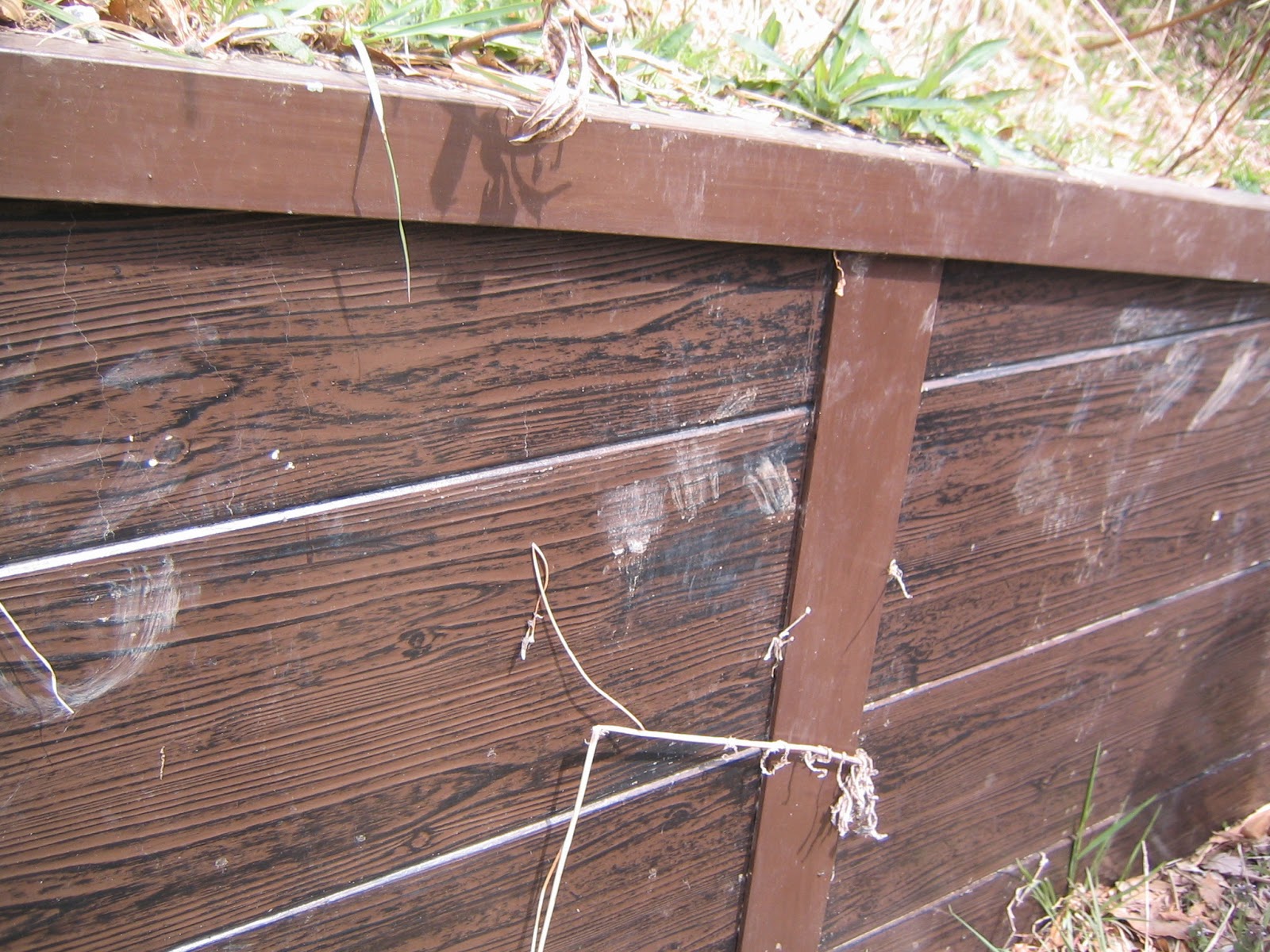Roughly speaking, Niiharu Citizen Forest (; map - in Japanese - here) consists of two kinds of sceneries, Yato 谷戸and (really) forests.
Together they created Satoyama.
“Yato” is old Japanese describing a small
valley surrounded by hills. In Kamakura, it was called “Yatsu,” and in Boh-soh
peninsula房総半島 (Chiba Prefecture), it was “Yatsu.” Valley had a small stream which
was easy to turn into a rice paddy. Humans developed series of rice paddies
along the stream, then dry lands for veggies up the slopes. Somewhere in the
middle of the hills, at a particularly suitable spot, they constructed houses,
such as Okutsu estate, and orchard. Further from Yato, it is a forest providing
many materials for daily living.
In Niiharu, Yato is preserved by the landlords
who engage in organic commercial farming for veggies and fruits, and volunteers
especially for rice paddies. Do you remember majority of the Citizen Forests
are leased property to the City?
 |
| It is a working farm land. Do you know Kanagawa prefecture is in the top 10 list for vegetable producers in Japan? |
 |
| Citizen rice paddies before planting |
When
we walk in Yato part of Niiharu, we cannot enter into the farm fields and
paddies, but it is OK to take a narrow way, called Azemichi 畦道 along the field.
Around
Azemichi, there are some structures for farming, where natural habitat finds
their home. For example,
 |
| Can you recognize some utility plants here? They naturally appear here. No one planted them. |
 |
| Beyond daffodils is an orchard. Niiharu people say they are replanting plums with peaches. |
 |
| Cherry blossoms of yama zakura, Cerasus jamasakura (Siebold ex Koidz) |
And many more! For two hours of very slow walk
along the farm land, we could recognize more than 60 utility plants, some
suitable for medicine, for small craft, for soil improvement, etc. and the
other for seasonal dishes, including tasty tempura! In Japan, we treasure 7
herbs of spring which will be cooked with rice porridge at the end of New
Year’s festival. It is said that the recipe is very good for health; we found
all the herbs in Azemichi of Niiharu.
芹、なずな、御形、はくべら、仏座、すずな、すずしろ、これぞ七草
“Seri, Nazuna, Gogyoh, Hakobera, Hotokenoza,
Suzuna, Suzushiro, Korezo Nanakusa.”
“Water dropwort, Shepherd's Purse, Cudweed, Chickweed,
Nipplewort, Turnip, Radish, This is Seven Herbs”
By
Yoshinari Yotsuzuji, 14th Century literati in his analysis of Tale of Genji.
君がため春の野に出でて若菜摘む我が衣手に雪は降りつつ
“Kimiga tame Haru no No ni Dete Wakana tsumu
Waga Koromodeni Yuki ha Furitsutsu”
“To give you; Go out to the field in Spring;
and gather young herbs; the snow is falling on my sleeves.”
By
Emperor Koko in Hyakunin Isshu 百人一首(one
hundred waka poems by one hundred poets) / Kokin-shu古今集 (905).
As the natural habitat of Niiharu recovers
strongly, animals which were not local but pets of somebody found their home
there after their freedom. We have found two kinds of footprints the other day.
According to the regulars, they are the prints
of Hakubishins (masked palm civet, Paguma larvata, which became notorious due
to Chinese SARS) and Raccoons (procyon lotor). If they can survive, the Forest
must be comfortable for Tanuki (Nyctereutes procyonoides) as well. Though
people say Japanese tanuki cannot win when they compete with raccoons or
hakubishins. That’s a pity … I hope Niiharu is large enough for all of them to
co-habit peacefully …
Besides Hakubishins and Raccoons, it is very
easy to recognize many kinds of birds in spring of Niiharu. They are busy
singing and we can enjoy the concert at Azemichi. Hibari (lark, Alauda
arvensis), hakusekirei (Japanese / Kamchatka Pied Wagtail, Motacilla alba
lugens), uguisu (Japanese bush warbler, Horornis diphone), gabichoh (melodious
laughingthrush, Garrulax canorus) … The staff in the Administrative Office told
us Niiharu has nests of Ohtaka (Northern Goshawks, Accipiter gentilis). They
also hear Fukuroh (owls, Strix uralensis) singing when they leave the office in
the evening. Considering Niiharu Forest is situated less than 1 km from Tohmei
Expressway 東名高速and lots of residential complexes surround it, it is amazing to
know these birds live there.
And so, the problem of nature thieves. The volunteers
and the City are distributing the visitors Yellow Card.
It says
Protect our precious birds from the wicked photographers!
Some enthusiasts of photography invade in the
nest of birds, including Ohtaka, and disturb the reproduction of them. Please
remain at the promenade in the Forest.
Don’t collect fauna and flora of Niiharu!
It is prohibited to collect beautiful flowers,
herbs, bamboo shoots and others. They are private property. Also, many plants
are on the verge of extinction from Niiharu due to the plant theft.
Please inform us if you find the pernicious activities in the
Forest.
If you find a problem in the
Park, please make a contact with
Office for the Park Greeneries in the North北部公園緑地事務所
Yokohama Municipal Government Creative
Environment Policy Bureau横浜市環境創造局
Phone: 045-311-2016 (I guess in Japanese only)
FAX: 045-316-8420 (I hope there is somebody who
can read English …)
Niiharu Administrative Office / Satoyama
Exchange Center新治管理事務所・里山交流センター
Phone: 045-931-4947
Fax: 045-937-0898





No comments:
Post a Comment